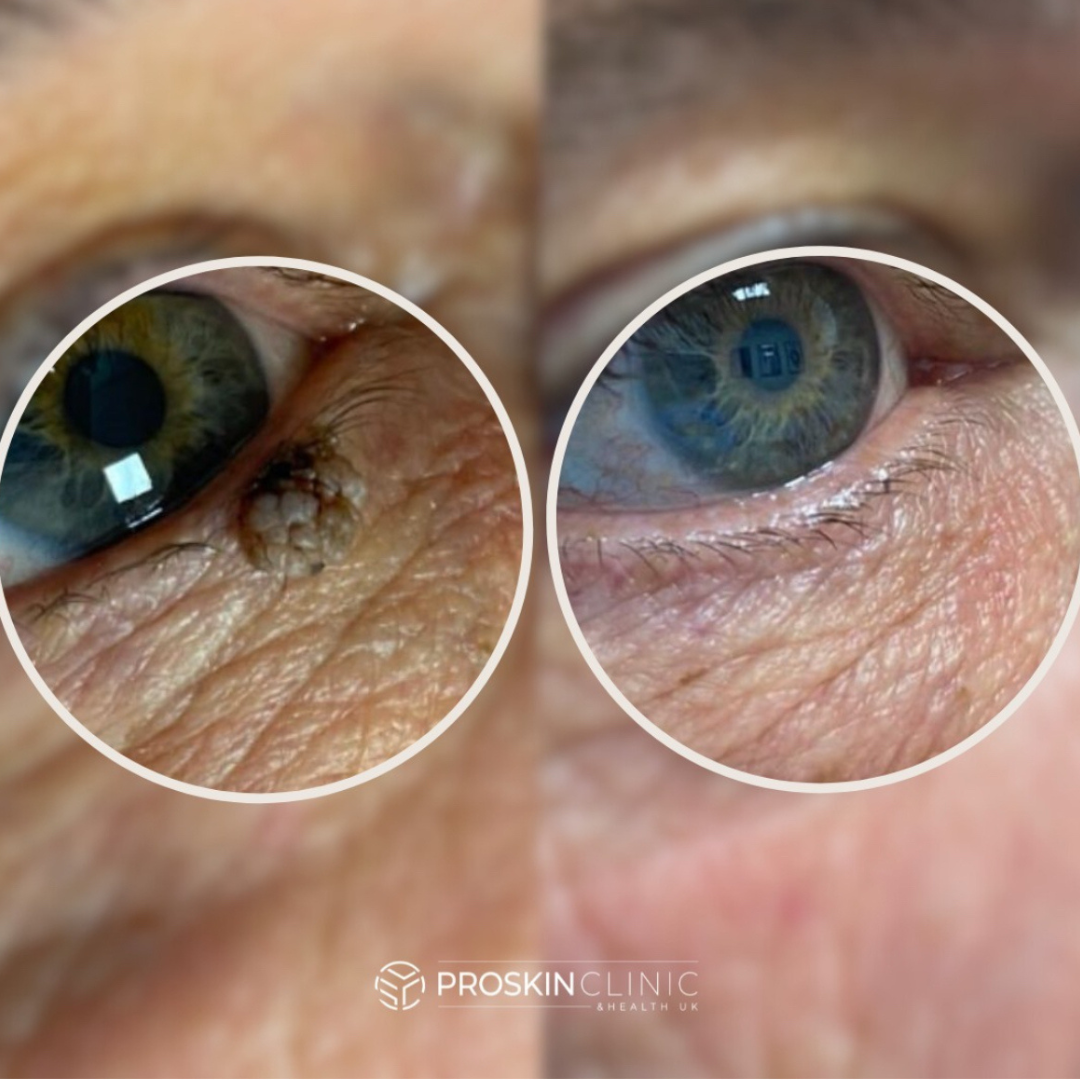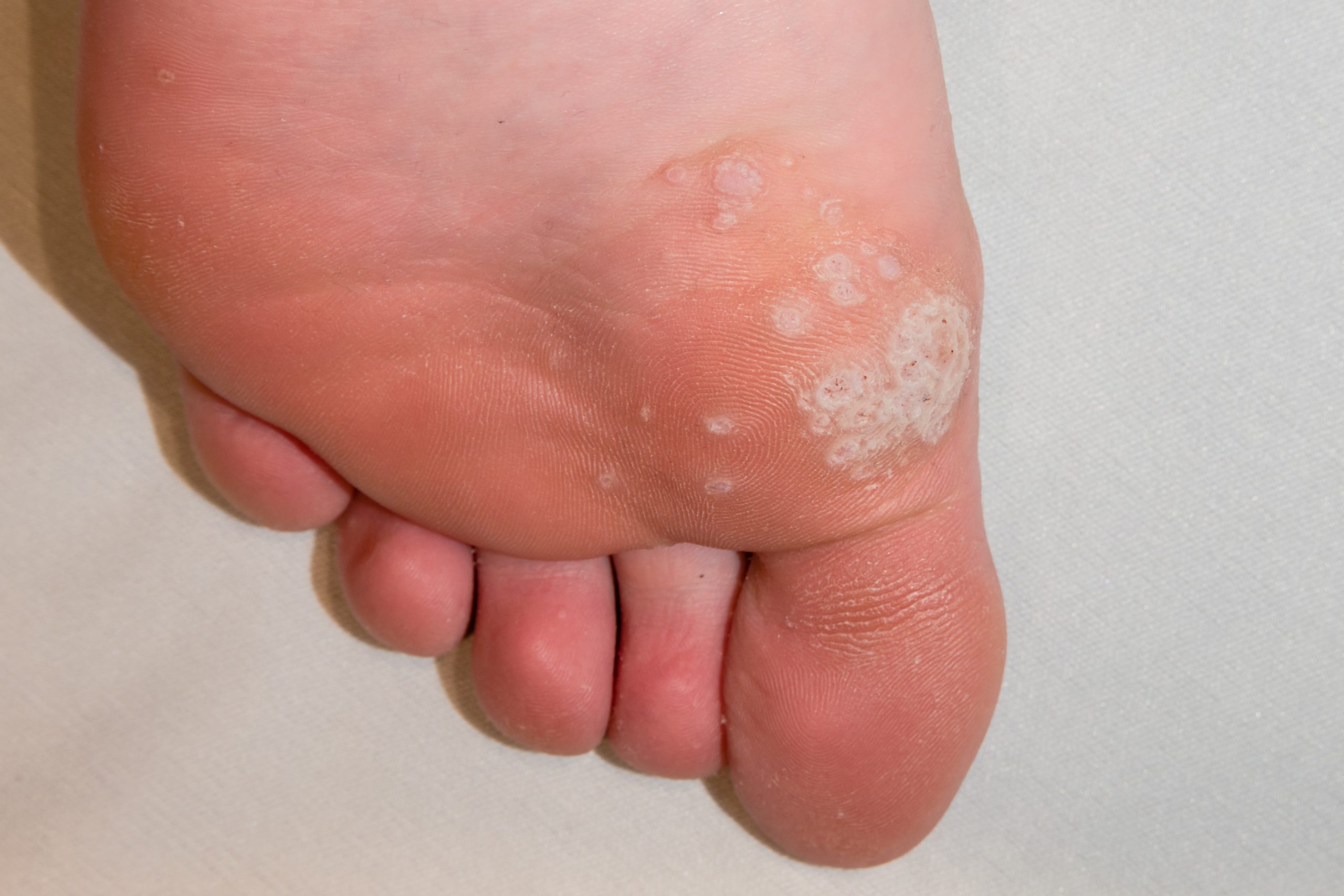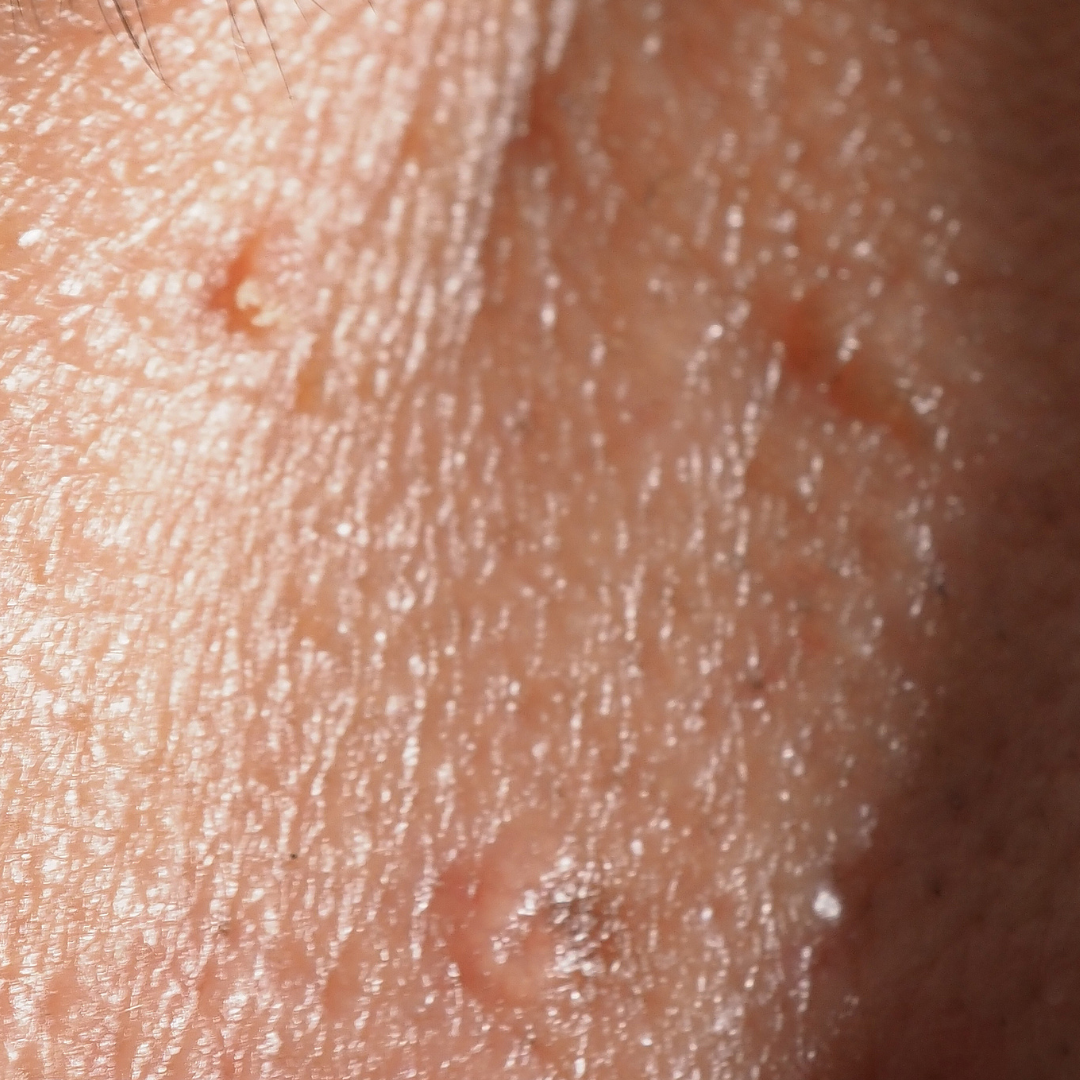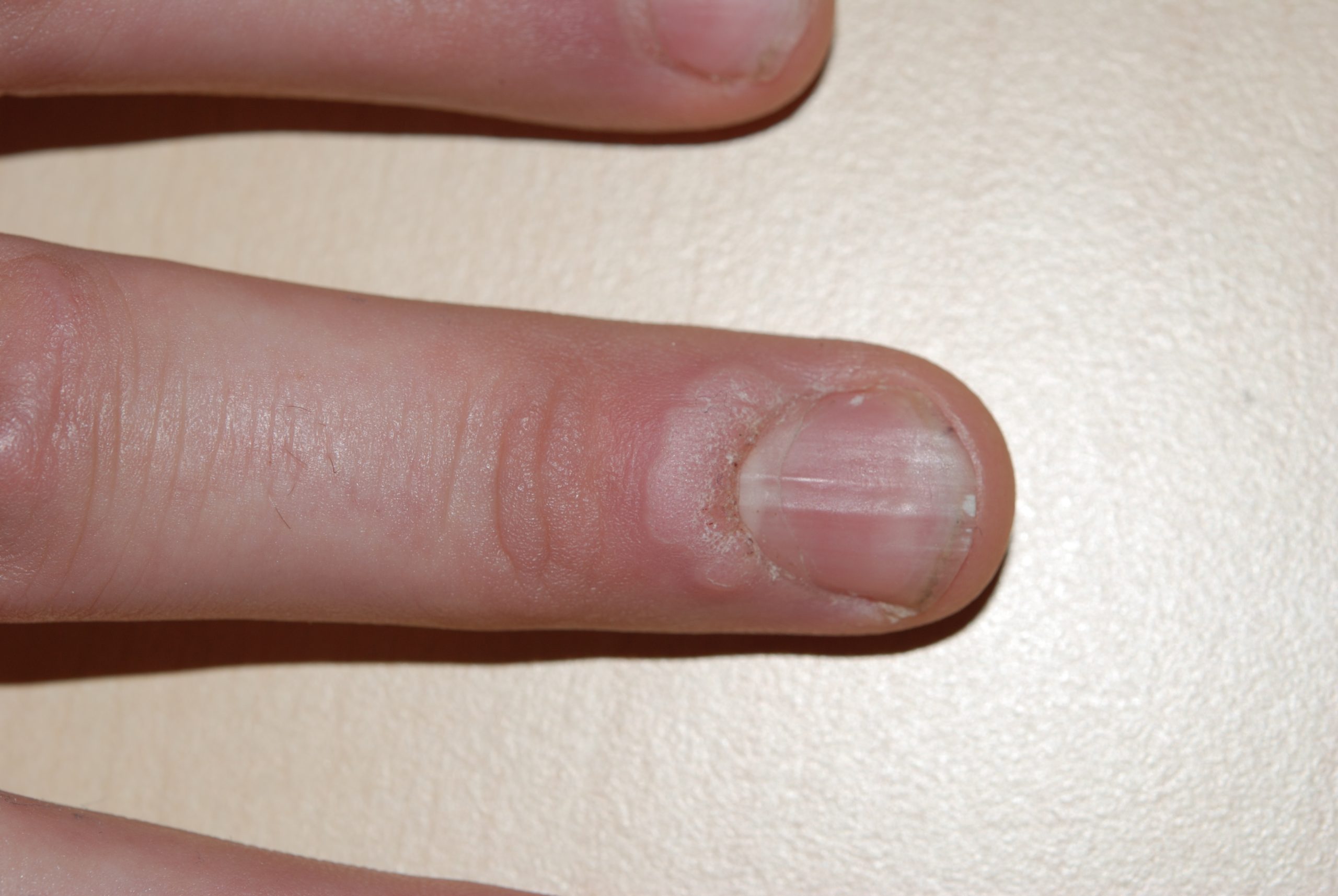Professional Wart Removal at ProSkin Clinic & Health UK
At ProSkin Clinic, we provide safe, effective wart removal treatments to help you regain smooth, clear skin.
Warts, while harmless, can be uncomfortable and unsightly, often affecting your confidence and daily life.
Using advanced, non-invasive techniques, our experienced team offers fast and reliable wart removal with minimal discomfort and downtime.
Whether your wart is on your hands, feet, or other areas of the body, we tailor each treatment to your specific needs, ensuring a comfortable experience and lasting results.
Say goodbye to unwanted warts and hello to healthy, clear skin with our expert care.
THE HIGHEST RATED CLINIC IN GLOUCESTER, LOCATED OPPOSITE GLOS ROYAL HOSPITAL.

Wart Removal Treatment Insights
Session Time:
Up to 45 mins
Session Price:
From £70
Treatment Areas:
Applicable to any area of the body.
Pain Level:
Mild Discomfort
Post Treatment:
Minimal Downtime
General Wart Questions:
What Are Warts, and Why Do They Form?
Warts are small, rough growths on the skin caused by a viral infection from the human papillomavirus (HPV). They form when the virus enters the skin through tiny cuts or abrasions, leading to an overgrowth of skin cells.
What Causes Warts to Appear on the Skin?
Warts are caused by direct contact with HPV, which can spread through skin-to-skin contact or contact with contaminated surfaces. The virus triggers an overproduction of skin cells, leading to the formation of a wart.
Are Warts Contagious?
Yes, warts are contagious. They can spread through direct contact with the wart or indirectly through shared surfaces, such as towels, floors, or personal items like razors.
How Do Warts Spread from One Person to Another?
Warts spread when the HPV virus is transferred through skin contact with a wart or by touching surfaces contaminated with the virus. Cuts, abrasions, or moist environments like showers and pools can increase the likelihood of transmission.
can you prevent getting warts?


Are Warts Dangerous to My Health?
Most warts are harmless and pose no serious health risk. However, they can be uncomfortable, unsightly, or painful, especially on weight-bearing areas like the feet. In some cases, warts can spread or persist, making professional treatment advisable.
Can Warts Go Away on Their Own?
Yes, warts can sometimes disappear on their own, but it may take months or even years for them to resolve. The immune system eventually fights off the virus, but professional treatment can help speed up the process and prevent spreading.
Why Do Some People Get More Warts Than Others?
Certain factors, such as a weakened immune system, frequent exposure to the virus, or having cuts and abrasions, can make some people more susceptible to warts. Children and people with compromised immune systems tend to be more prone to warts.
Can Warts Come Back After They’ve Been Removed?
Yes, warts can sometimes come back even after removal, particularly if the virus is still present in the skin. Proper treatment and aftercare can reduce the chances of recurrence, but new warts may form if the virus is reintroduced.
What Areas of the Body Can Warts Appear On?
Warts can appear on any part of the body, but they are most common on the hands, feet, face, neck, and genitals.
The specific type of wart often dictates where it is likely to form.
For example, plantar warts appear on the feet, while flat warts are more common on the face and hands.
What Are the Best Methods for Wart Removal?
What Types of Warts Are There?

COMMON WARTS
These warts grow mainly on the hands, feet, fingers, nails, and feet. These will be thick, rough and have a domed like shape top. These types of warts have a black spot in the middle which shows a blood clot and can appear as tiny lumps on the surface of the skin.
Common warts only tend to show up when there is broken skin, for example, a person who bites their nails are more likely to get warts on this area than a person who doesn’t. These warts can transfer to other areas on the body.

PLANTAR WARTS
Plantar warts are also known as verrucas.
The main area in which they grow are on the balls or the top of the feet, this is because we apply the most pressure here on the foot. It has a thick outer layer and firm to touch.
Plantar warts have a black spot in the middle, these are capillaries that have dried up blood in them. It can cause discomfort when walking or apply pressure to the area.
One of the main differences with these types of warts are they tend to grow into the skin rather than out. Plantar warts aren’t very big, they tend to grow to a pea size either as a single wart or in a cluster.

Flat WARTS
Flat warts are harmless and can grow anywhere on the body, but normally comes around the face, thighs and arms.
Flat warts stay close with the skin with a flesh coloured/slightly yellow. They are not painful and normally appear where there has been a tare in the skin, for example, shaving legs and tend to appear more with young adults.

Filiform WARTS
Filiform warts can look very distinctive, with narrow projections that protrude from the lesion, they often grow around the mouth, nose, chin and neck.
These warts can look similar to a skin tag and appear quickly. They can be many colours from pink, yellow, brown or more neutral to your skin tone.
Filiform warts are harmless however, they can cause some pain/discomfort. Sometimes they can be itchy, irritated and in some cases bleed because of the area that they can appear in.
Filiforms are contagious and can be spread through broken skin, in an area where the skin is moist and warm or if you have been exposed to the HPV virus.

PERIUNGUAL WARTS
The most common area for periungual warts to grow are the fingernails and toenails. These types of warts can be painful, and it will affect how the nail grows.
Being rough to the touch, these warts can grow alone to start but eventually grow into clusters. They can cause the nail to split, cause pain to the area the bigger they get and will cause the cuticles to be uneven and out of shape.
Ensuring you have good hygiene; this can prevent the wart from being transferred to other parts of the body.
Wart Removal Treatment Questions:
How Does Wart Removal Work at ProSkin Clinic?
At ProSkin Clinic, wart removal involves using advanced techniques like electrolysis or plasma fibroblast therapy to safely target and remove warts.
Our team carefully assesses each wart and selects the most suitable method to ensure efficient removal with minimal discomfort and downtime.
How Long Does a Wart Removal Procedure Take?
The wart removal procedure typically takes between 15 to 30 minutes, depending on the size and number of warts being treated.
Larger or more complex cases may require a bit more time, but most sessions are relatively quick.
Does Wart Removal Hurt?
Wart removal at ProSkin Clinic is designed to be as comfortable as possible. While there may be mild discomfort during the procedure, most clients report the sensation is manageable.
Techniques like electrolysis and plasma fibroblast may cause a slight tingling or warmth, but these effects are brief.
Will I Need More Than One Treatment to Remove a Wart Completely?
Some warts may require multiple treatments for complete removal, especially if they are large or deeply rooted. However, many warts can be successfully treated in just one session. Your clinician will assess the wart and recommend the appropriate number of treatments.
How Do I Know If My Wart Needs to Be Removed?
Warts should be removed if they cause discomfort, irritation, or embarrassment, or if they spread to other areas. If a wart shows any changes in size, shape, or color, or if it is painful, it’s best to seek professional advice to determine if removal is necessary.
Can Warts Be Treated at Home, or Is Professional Treatment Necessary?
While some over-the-counter treatments may work for smaller warts, professional treatment is usually more effective and quicker.
At-home methods can take longer and are not always as reliable for complete removal, especially for larger or more stubborn warts.
Professional treatment ensures safe and efficient removal.
What Should I Expect During the Wart Removal Procedure?
You may feel a mild tingling or warming sensation as the wart is treated. The procedure is relatively quick, and most clients experience minimal discomfort. Afterward, you may receive instructions for aftercare to ensure optimal healing.
What Should I Expect Immediately After Wart Removal?
Immediately after wart removal, you may notice slight redness, swelling, or tenderness in the treated area. This is normal and typically subsides within a few hours to a day. In some cases, a small scab may form over the treated area, which will heal naturally over time.
How Long Does It Take to Heal After Wart Removal?
Healing time varies depending on the size and method of removal, but most clients fully heal within 1 to 2 weeks.
Larger or deeper warts may take slightly longer to heal, but following proper aftercare will help speed up the process.
What is the aftercare following a Wart Removal Procedure?
After wart removal, it’s important to keep the treated area clean and dry. You may be advised to avoid using harsh soaps or creams and to apply an antibacterial ointment to promote healing. Avoid picking or scratching the area, and allow any scab to heal naturally. Protect the area from sun exposure to prevent hyperpigmentation.
Will There Be Scarring After Wart Removal?
In most cases, there is minimal to no scarring after wart removal, especially when using techniques like electrolysis or plasma fibroblast, which are designed to minimize skin damage. However, if the wart was large or in a sensitive area, there is a slight chance of minor scarring, which should fade over time.


SINGLE LESION
PER SESSION- Single Wart Removal
Multiple lesions
PER SESSION- Up to 5 Wart Removals
Multiple+ lesions
PER SESSION- 5 + Wart Removals (max 10 per sitting)
“So Relieved To Have It Gone“
I had a stubborn wart on my finger for over a year that just wouldn’t go away with at-home treatments. I decided to visit ProSkin Clinic & Health, and I couldn’t be happier with the results! The team was professional, and they explained the process clearly. The removal was quick, and within two weeks, my finger was completely healed. I’m so relieved to have it gone! Highly recommend ProSkin Clinic for wart removal.
“Really Exceeded My Expectations“
I had a wart on my face that made me feel really self-conscious. The team at ProSkin was so kind and understanding. They explained the procedure in detail and made me feel comfortable the whole time. The removal was quick, and after a few days, the area had healed beautifully with no scar! I’m so happy with the outcome. ProSkin really exceeded my expectations.
“Completely Wart Free“
I had several warts on the bottom of my foot that made walking uncomfortable. After trying different treatments with no success, I went to ProSkin Clinic & Health UK, and the results were fantastic. The whole process was quick, and the discomfort was minimal. My foot is now completely wart-free, and I can walk without pain again. I’m so grateful for their expertise!

Request a Call Back.
At ProSkin Clinic & Health UK Ltd, your skin’s health are our top priority. If you’re considering one of our treatments but have questions or need guidance, we’re here to help. Request a callback, and let’s start your journey to amazing skin together.
How It Works:
- Fill out a simple form with your name, contact information, and a brief message about your skincare needs.
- Our expert team will review your enquiry and get back to you promptly.
- We’ll provide detailed information and can even set up a consultation appointment for you.

In an industry where promises are plentiful but assurances are rare, unlike any other Clinics, ProSkin Clinic & Health UK stands apart by offering an unparalleled guarantee.
This isn’t just a policy; it’s our promise to you.
It means that we are so confident in the effectiveness of our treatments and the quality of our products that we are willing to stand by them with a guarantee. From the moment you step into our clinic, you’re covered by our commitment to your satisfaction.
Professional Wart Removal at ProSkin Clinic & Health UK
At ProSkin Clinic, we provide safe, effective wart removal treatments to help you regain smooth, clear skin.
Warts, while harmless, can be uncomfortable and unsightly, often affecting your confidence and daily life.
vUsing advanced, non-invasive techniques, our experienced team offers fast and reliable wart removal with minimal discomfort and downtime.
Whether your wart is on your hands, feet, or other areas of the body, we tailor each treatment to your specific needs, ensuring a comfortable experience and lasting results.
Say goodbye to unwanted warts and hello to healthy, clear skin with our expert care.
